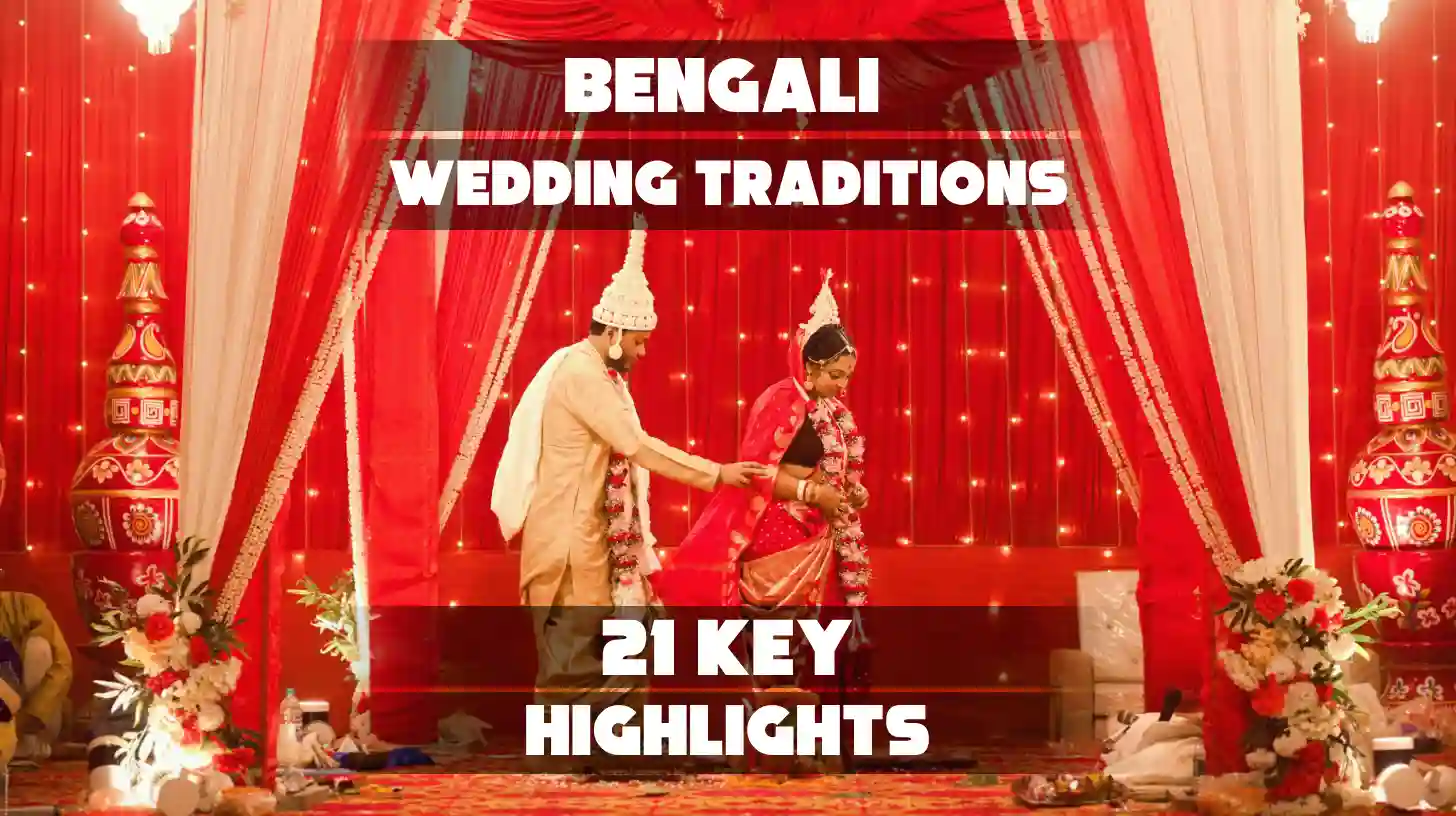Are you struggling to understand the intricate Bengali wedding traditions and how to incorporate them into your big day?
With so many customs and rituals to consider, it’s easy to feel lost in the details. But don’t worry – you don’t have to go through this journey alone.
In this article, we’ll cover:
- Pre-Wedding Rituals: Key traditions like Aashirwad and Gaye Holud
- Main Wedding Rituals: Saat Paak and Mala Badal
- Sacred Rituals: The significance of Yajna and Bengali wedding vows
- Post-Wedding Customs: Bidaai, Bou Bhaat, and the reception
- Cultural Symbols: Gifts, music, and decorations
Ready to explore these timeless traditions? Let’s get started!
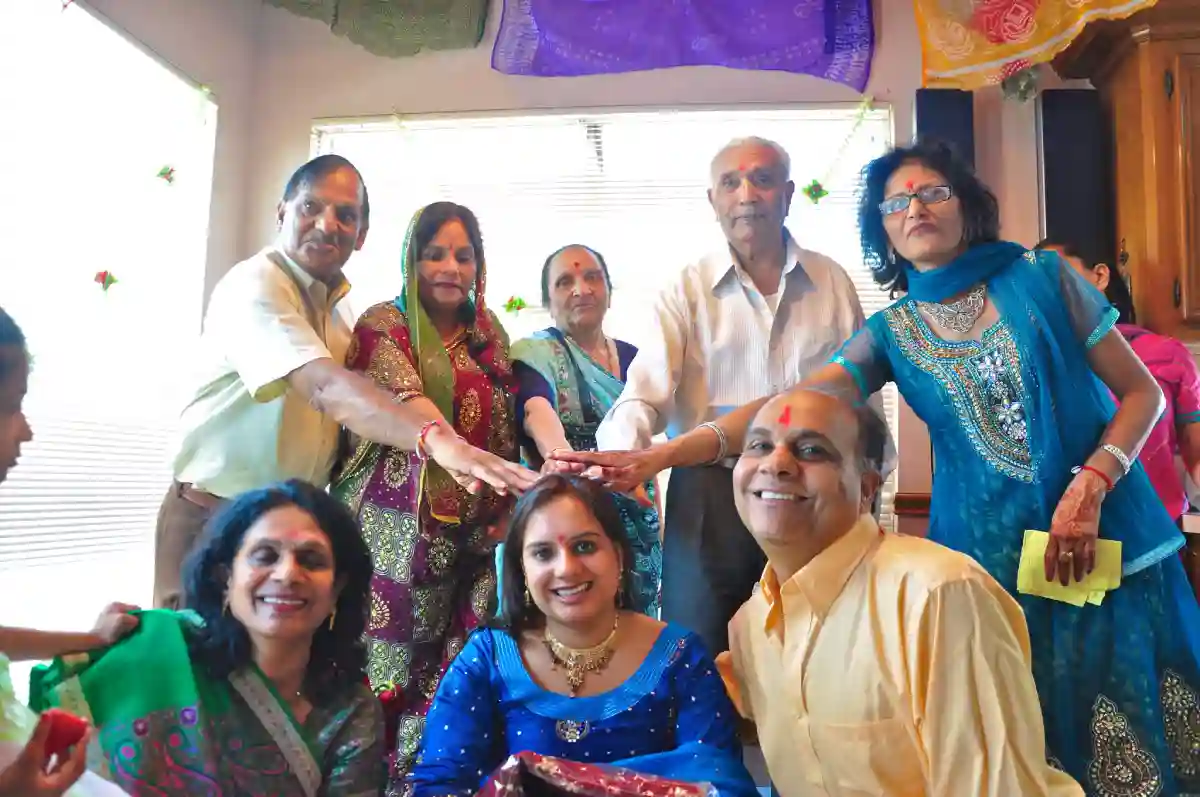
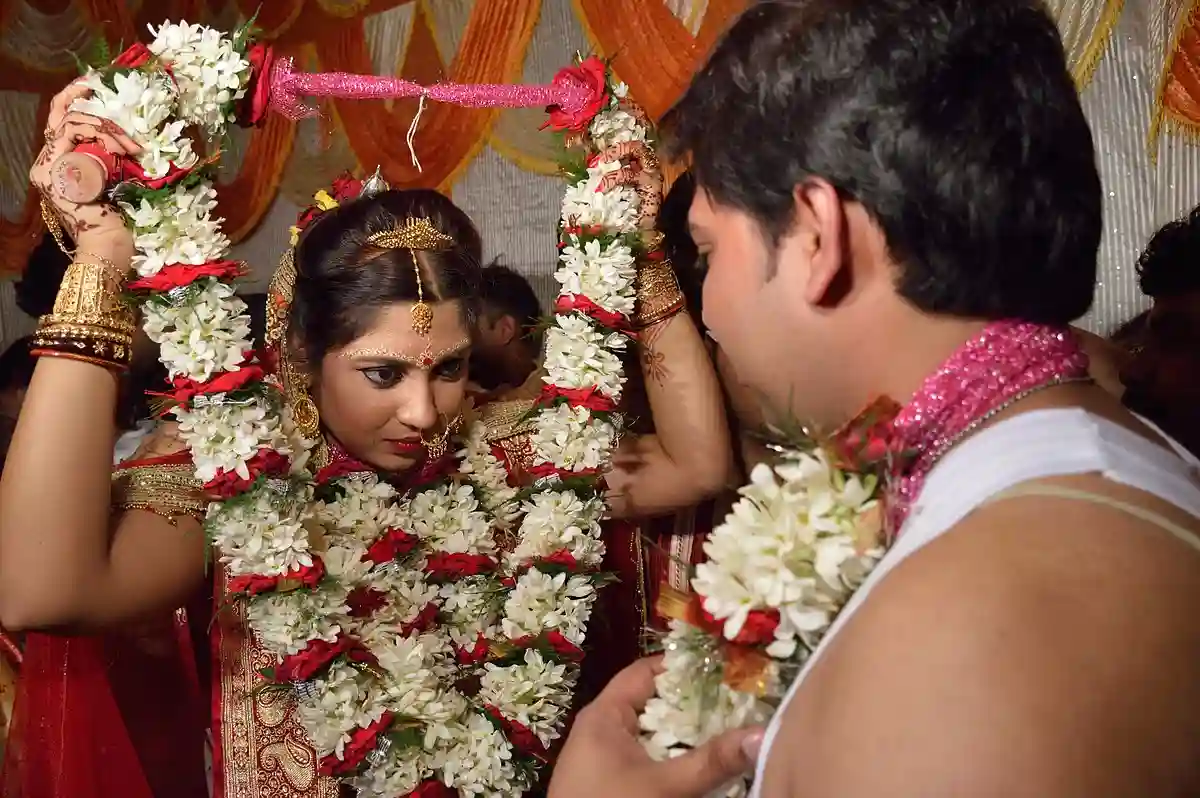
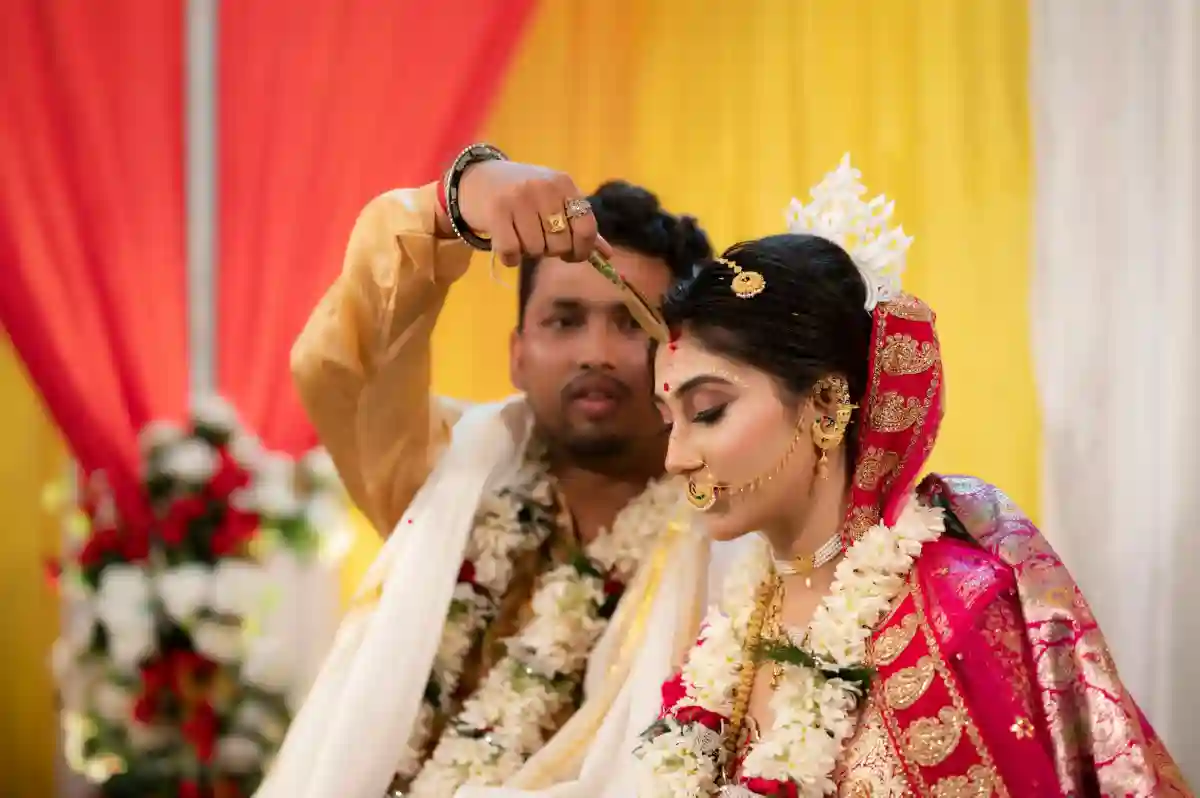
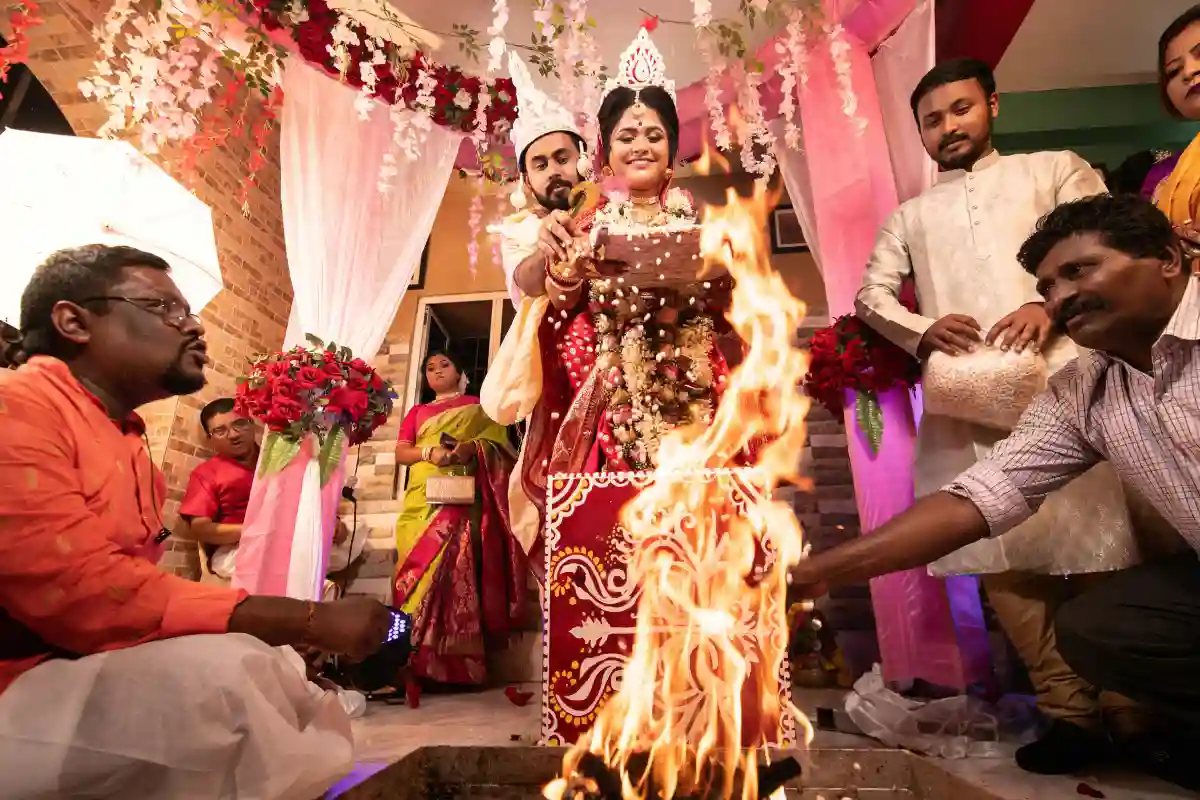
Pre-Wedding Rituals in Bengali Wedding Traditions
1. Aashirwad Ceremony

The Aashirwad Ceremony is a heartfelt moment where both the bride’s and groom’s families come together to offer their blessings. This sacred event symbolizes love, unity, and wishes for a long, happy marriage. It strengthens family bonds before the traditional Bengali wedding.
2. Mayer Bagan
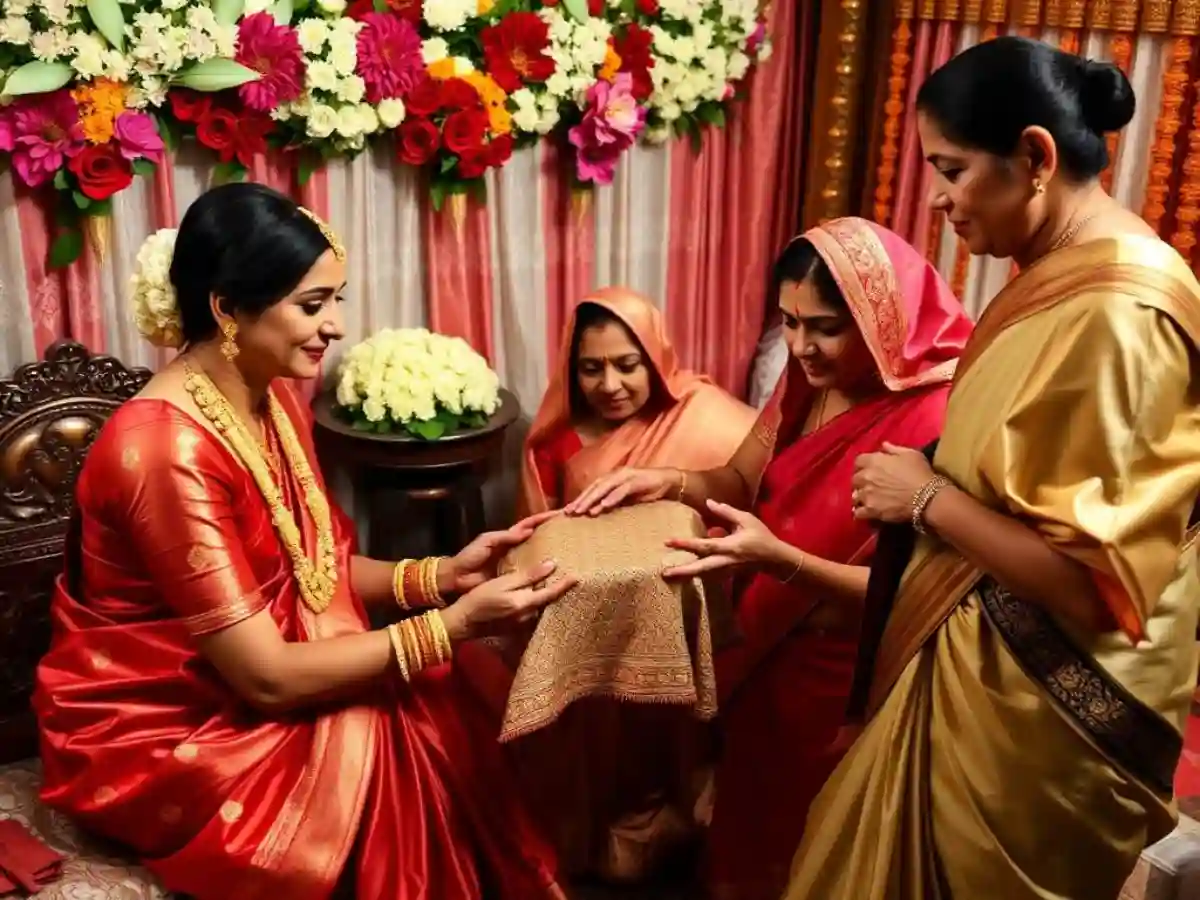
Mayer Bagan is a meaningful tradition where both the bride and her family exchange gifts, such as clothes and jewelry. These gifts represent love, support, and blessings. It’s a heartwarming moment before the traditional Bengali wedding, celebrating the bride’s roots and family bonds.
3. Gaye Holud (Haldi Ceremony)
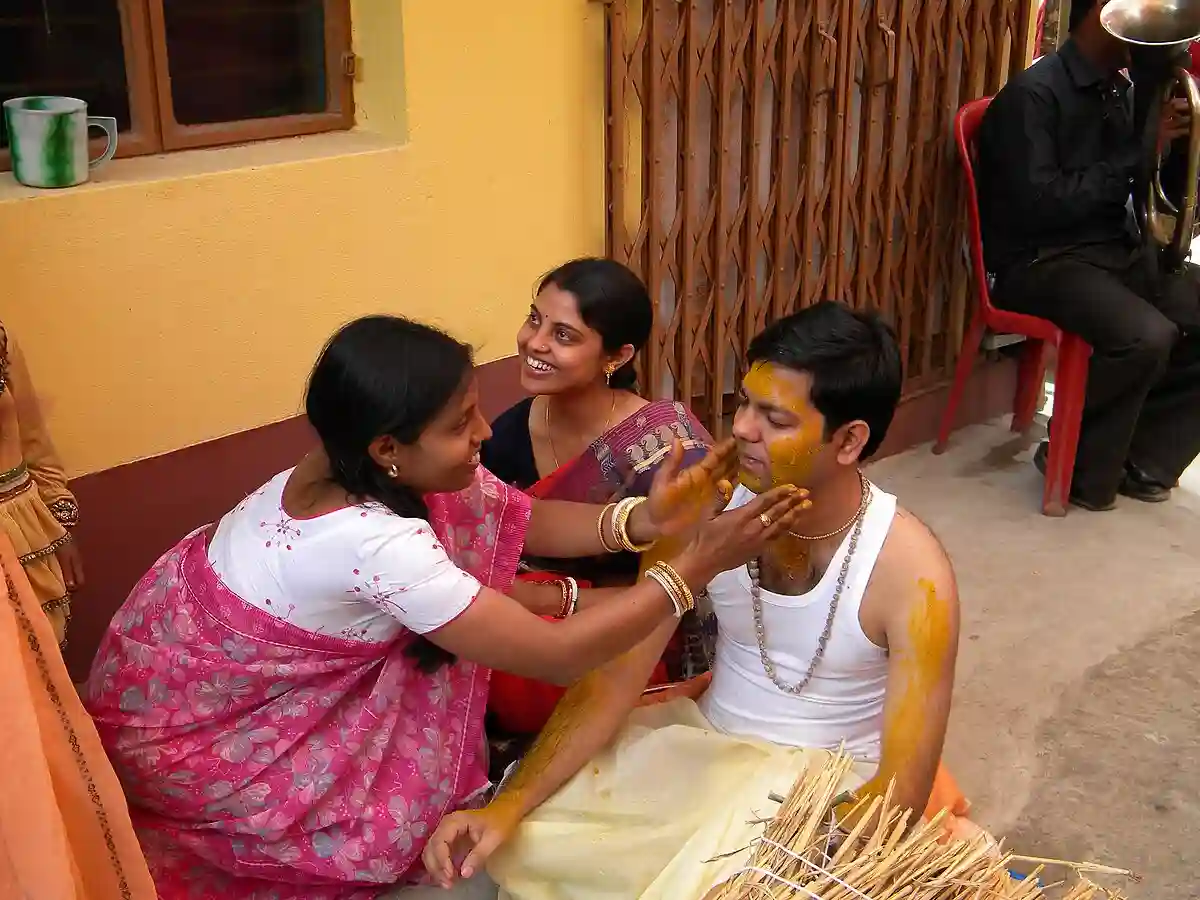
The Gaye Holud is an important pre-wedding tradition. During this, the bride and the groom are smeared with a turmeric paste, symbolizing purification and prosperity. Married women gather to bless the couple. The groom’s turmeric paste marks the beginning of a joyful celebration before the wedding.
4. Sankranti (Engagement)
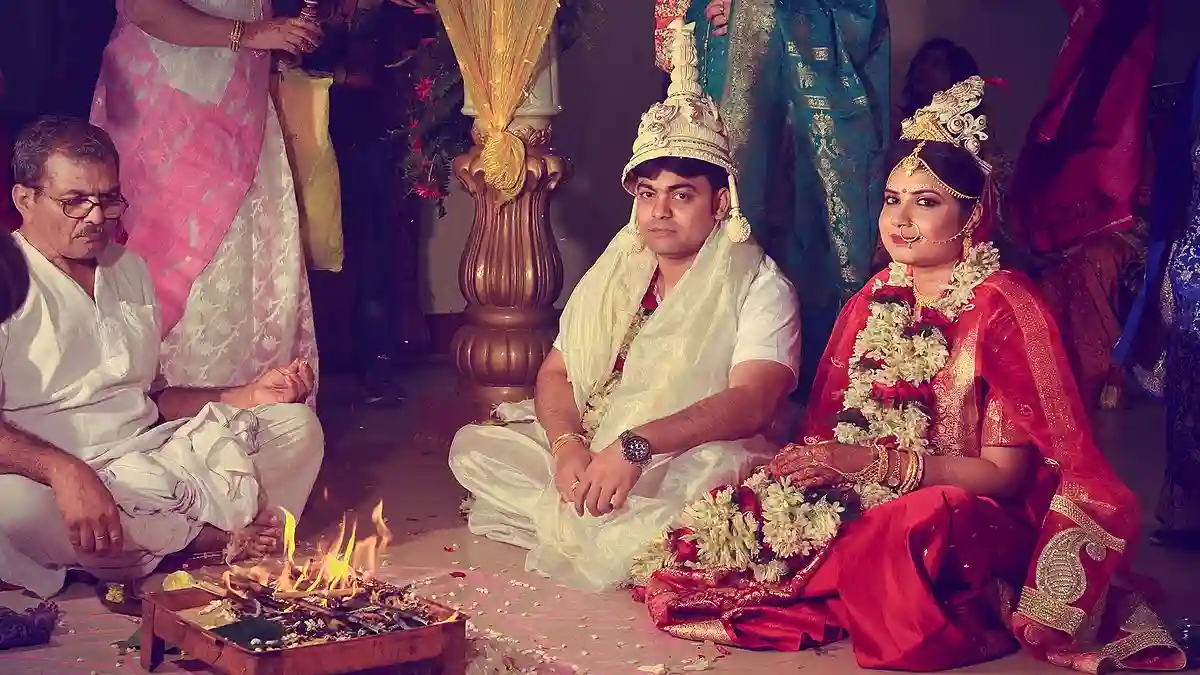
The engagement ceremony marks the start of the wedding day for the bride and the groom. Bengali wedding traditions include the bride’s hair parting and the groom promising to care for his new bride. Puffed rice is shared, and the groom stands beside his bride.
See Also Indian Dating Culture
Main Wedding Rituals in Bengali Wedding Traditions
5. Bor Jatri
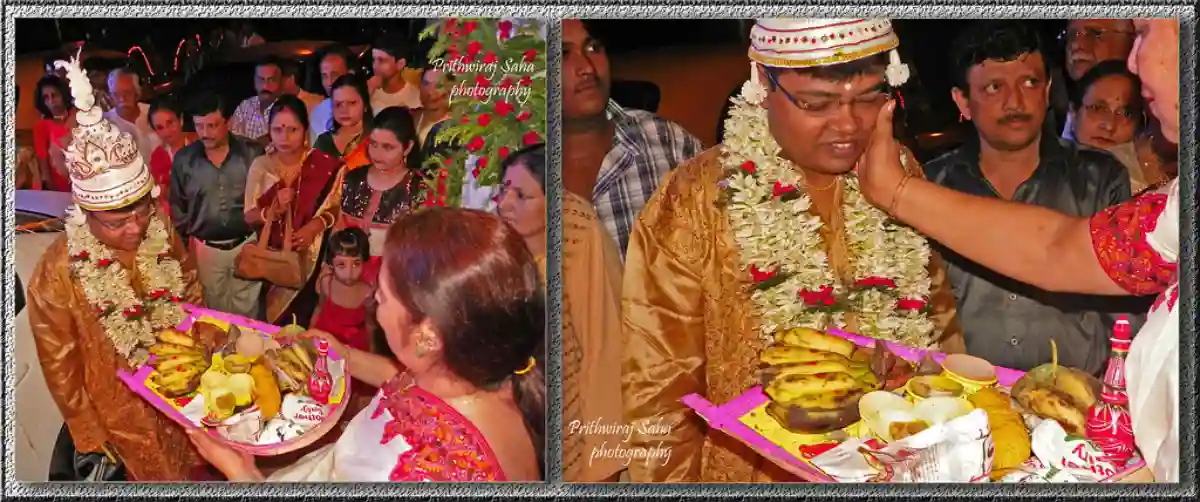
The Bor Jatri is a lively procession where the groom’s family blesses him as they head to the bride’s home. The groom visits the bride’s house, and the celebration is filled with music, dances, and excitement, symbolizing the joy and anticipation before the wedding.
6. Saat Paak (Seven Circles)
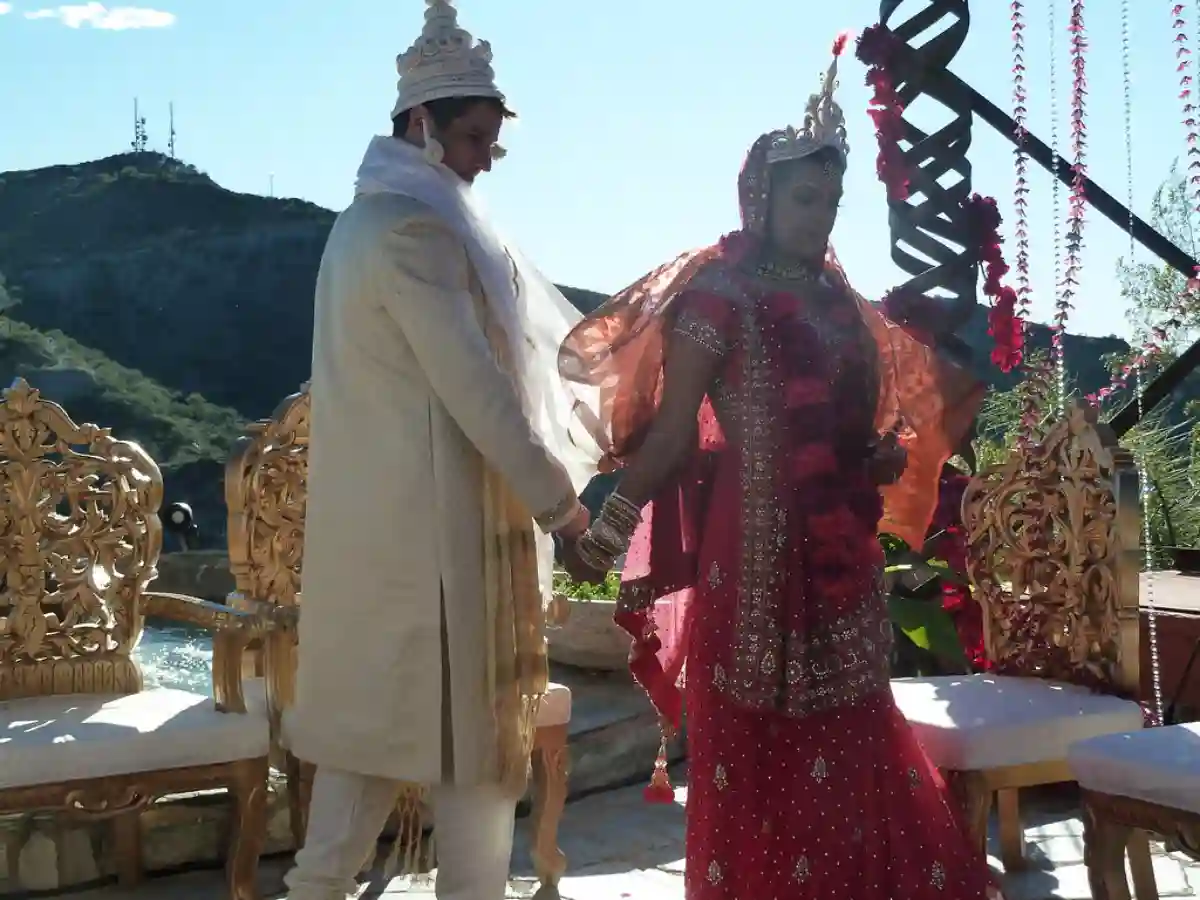
Saat Paak is a significant wedding ritual in Bengali Hindu weddings, where the bride circles the groom seven times, each circle symbolizing a vow and deepening their bond. Each circle represents a vow, symbolizing their growing bond and union. The ritual signifies the couple’s commitment to each other and their shared journey, marking the moment they officially become partners for life.
This moment often takes place just before the groom’s family blesses the couple, and the bride stands to receive the blessings.
7. Subho Drishti (First Glance)

Subho Drishti is the first moment the bride and groom officially see each other during the wedding ceremony. It is a deeply symbolic event, representing the beginning of their union. This exchange of glances signifies the couple’s readiness to embark on their new life together, filled with love and promises. The wedding date has finally arrived, and this moment marks the start of everything.
8. Potto Bhora (Placing Betel Leaves)
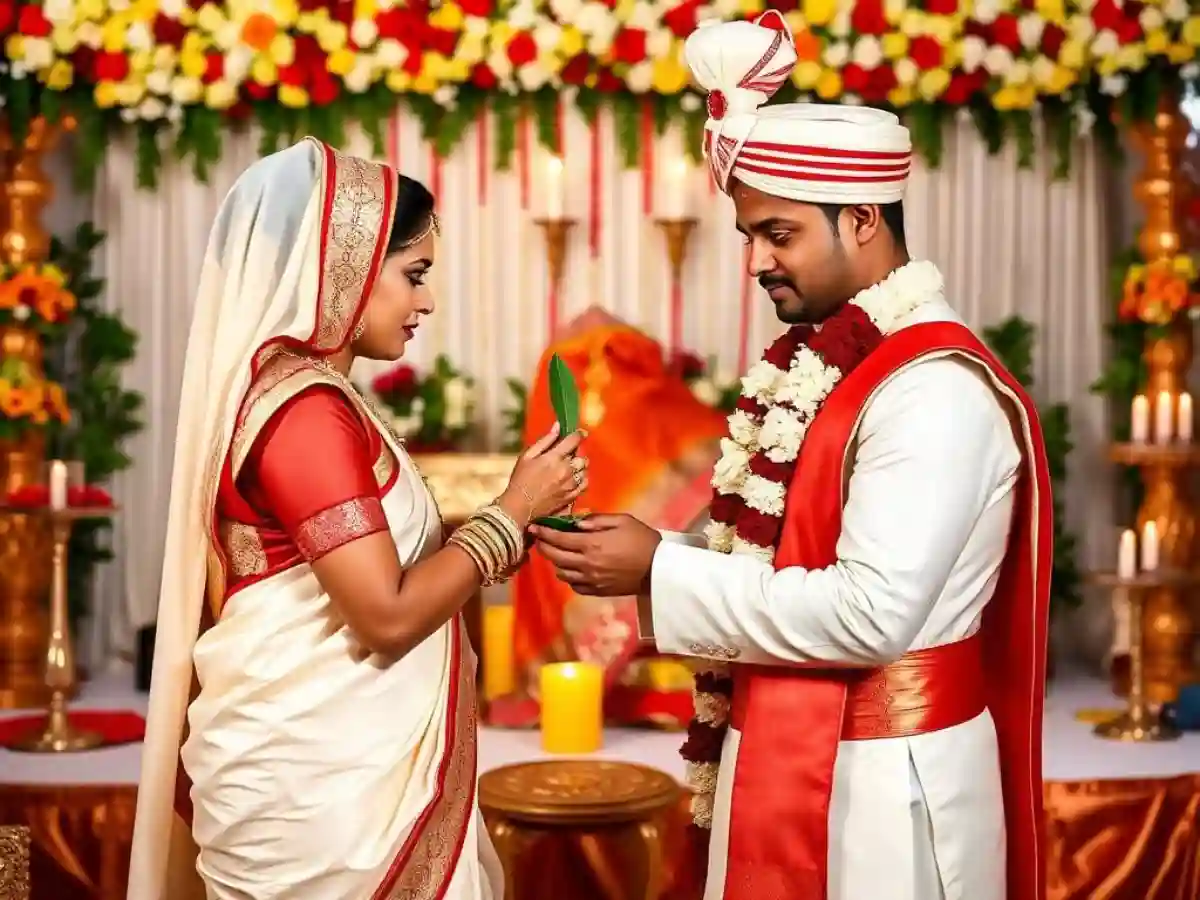
Potto Bhora is a traditional Bengali marriage ritual where the bride and groom exchange betel leaves. This symbolic act takes place during the main wedding rituals and signifies mutual respect, commitment, and a blessed start to their newlywed life. It enhances the bond and harmony in the relationship.
9. Mala Badal (Exchange of Garlands)

Mala Badal is an important part of Bengali marriage where the bride and groom exchange flower garlands at the wedding venue. This act symbolizes love, respect, and mutual acceptance. It marks the couple’s commitment to each other, strengthening their bond and future as a newlywed couple.
10. Bengali Wedding Vows
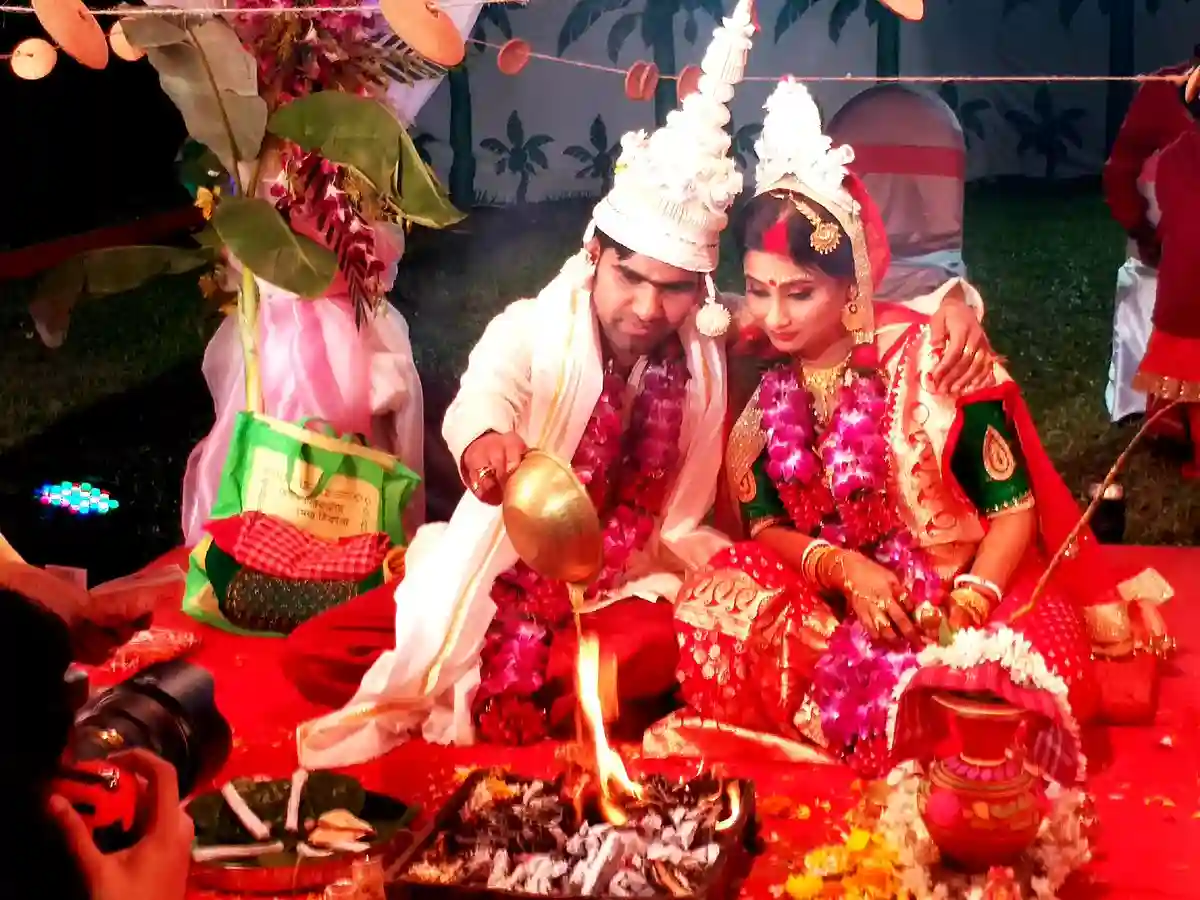
In the wedding ceremony, the newlywed couple exchanges vows, surrounded by family at the wedding mandap. The groom’s arrival is celebrated with joy, and the bride’s family offers blessings. The groom’s mother welcomes the bride, and the bride serves ghee rice as part of traditional customs. The bride’s mother gives her blessings.
See Also Indian Dance Styles
Sacred Rituals in Bengali Weddings
11. Yajna (Sacred Fire Ceremony)
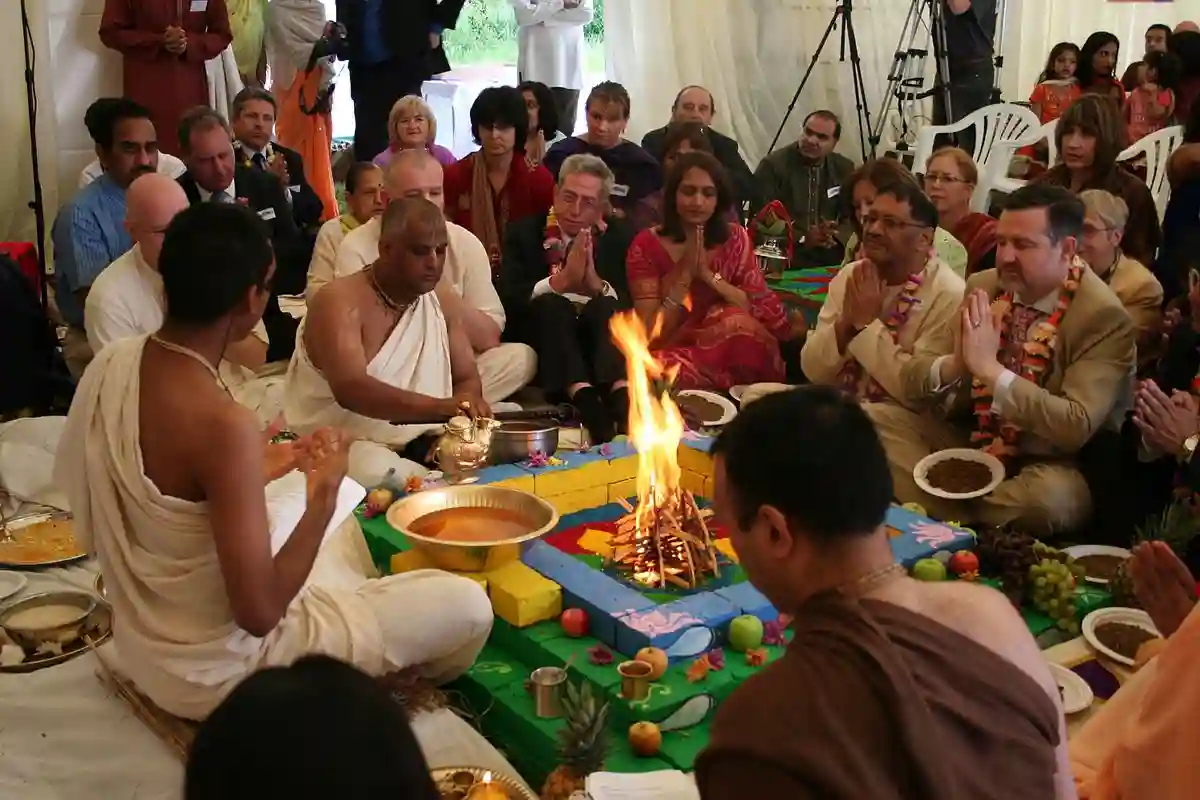
In the Bengali marriage, the bride and groom perform the Yajna ritual, walking around the holy fire. This sacred act, part of the main wedding rituals performed, involves offering prayers and vows, seeking blessings for a prosperous life. It strengthens their bond, symbolizing purity and commitment.
12. Phool Shajao (Flower Offering)
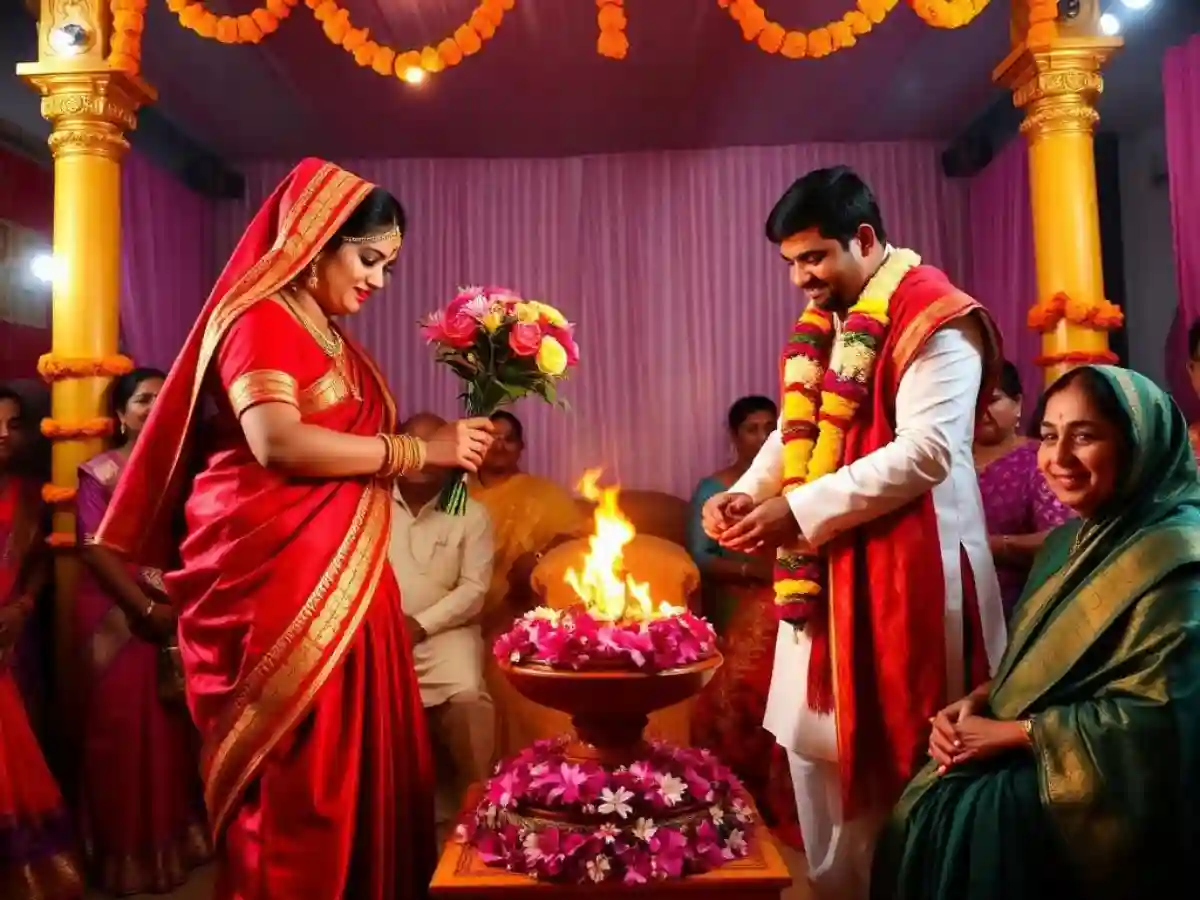
In the Phool Shajao ritual, the newlywed couple offers flowers to the wedding mandap’s sacred fire. This act represents the blossoming of their love and unity. The bride’s family receives the couple’s offerings, symbolizing a new life together, filled with blessings, love, and prosperity. Beautiful floral garlands are exchanged, symbolizing purity and harmony.
13. Anjali (Offering of Rice)
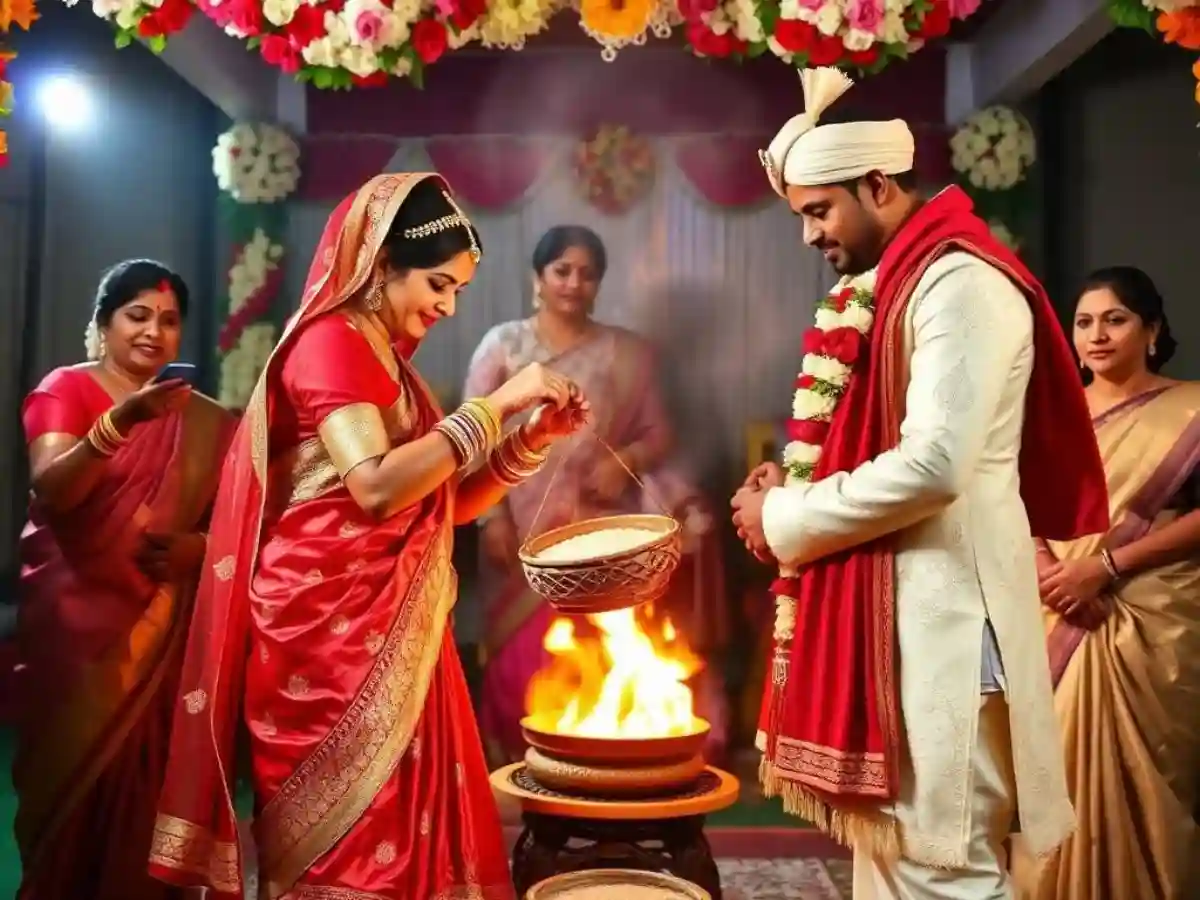
Anjali is a key Bengali wedding ritual where the bride and the groom offer rice to the holy fire. This sacred act symbolizes their commitment and respect for each other. It represents their shared wish for a prosperous and abundant life, marking the beginning of their newlywed couple journey together.
14. Sindoor Daan (Applying Vermilion)

In the Sindoor Daan ceremony, the groom arrives and applies sindoor to the bride’s forehead, marking her as married. This significant moment symbolizes the strength of their bond and the groom’s commitment. As the priest chants Vedic mantras, the newlywed couple begins their journey together, celebrated with wedding rituals, family blessings, and love.
Post-Wedding Rituals in Bengali Weddings
15. Bashor Ghar (Wedding Night Ritual)
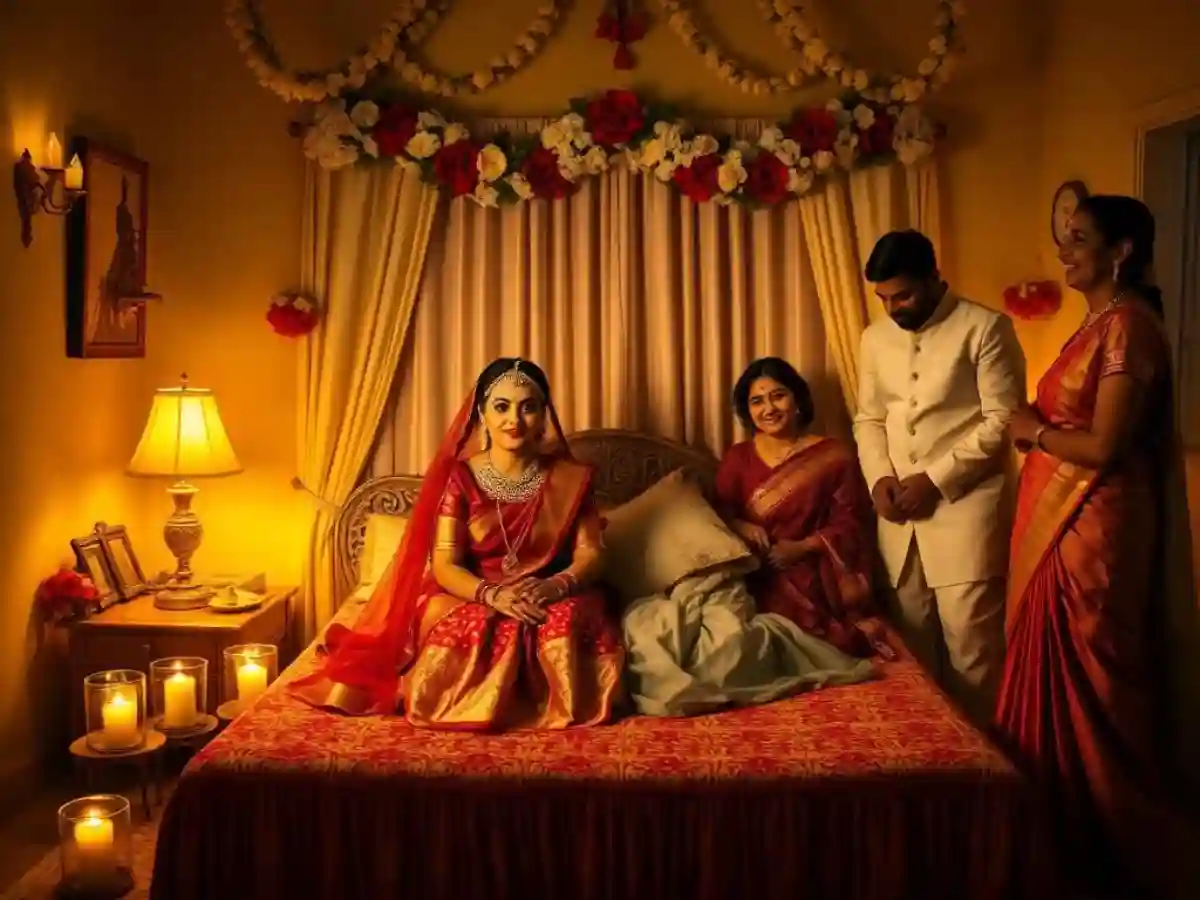
Bashor Ghar is one of the cherished Bengali wedding traditions that mark the newlywed couple’s first night together. After all the wedding rituals, the Bengali bride and groom begin their married life with blessings from family members. This intimate moment, celebrated at the bride’s house, symbolizes their transition into a loving, joyful union, surrounded by the support of their bride’s family.
16. Bidaai (Bride’s Farewell)

Bidaai is an emotional moment when the bride bids farewell to her family. As she leaves her childhood home, she begins a new journey with the groom’s family. This bittersweet ritual symbolizes the bride’s transition to her new life, filled with love, hope, and blessings from her family.
17. Bou Bhaat (Bride’s First Meal at Groom’s House)
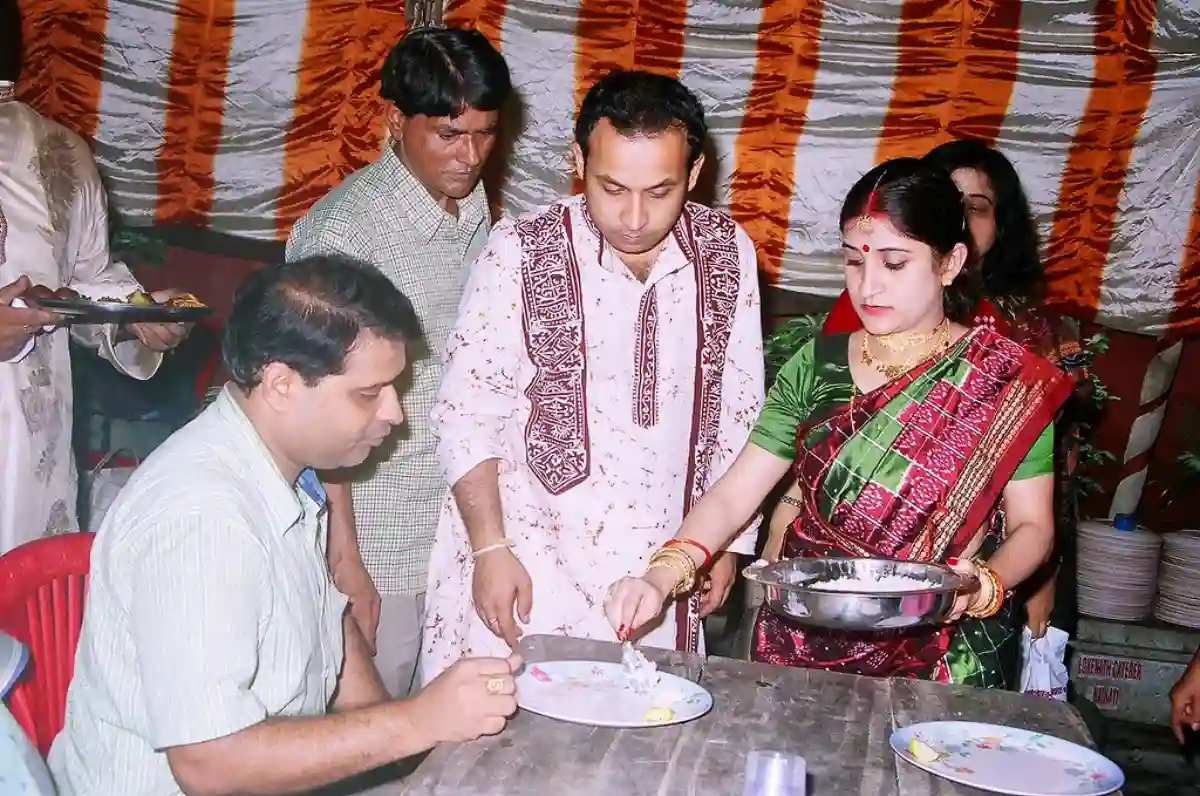
Bou Bhaat is an important ritual where the Bengali bride serves her first meal at the groom’s home. This moment signifies her acceptance into his family and marks her new role in the household. It symbolizes the bonding and unity between both families, celebrating the couple’s new beginning.
See Also Traditional Indian Wedding Dress
Cultural Significance of Bengali Wedding Traditions
18. Gift Giving and Jewelry in Bengali Weddings
Gold jewellery and gifts symbolize prosperity and blessings in Bengali wedding traditions. These exchanges strengthen the bond between the bride and the groom and their families. It is a tradition that expresses love, support, and good wishes for a prosperous life together, marking the beginning of their journey.
19. Traditional Bengali Wedding Music
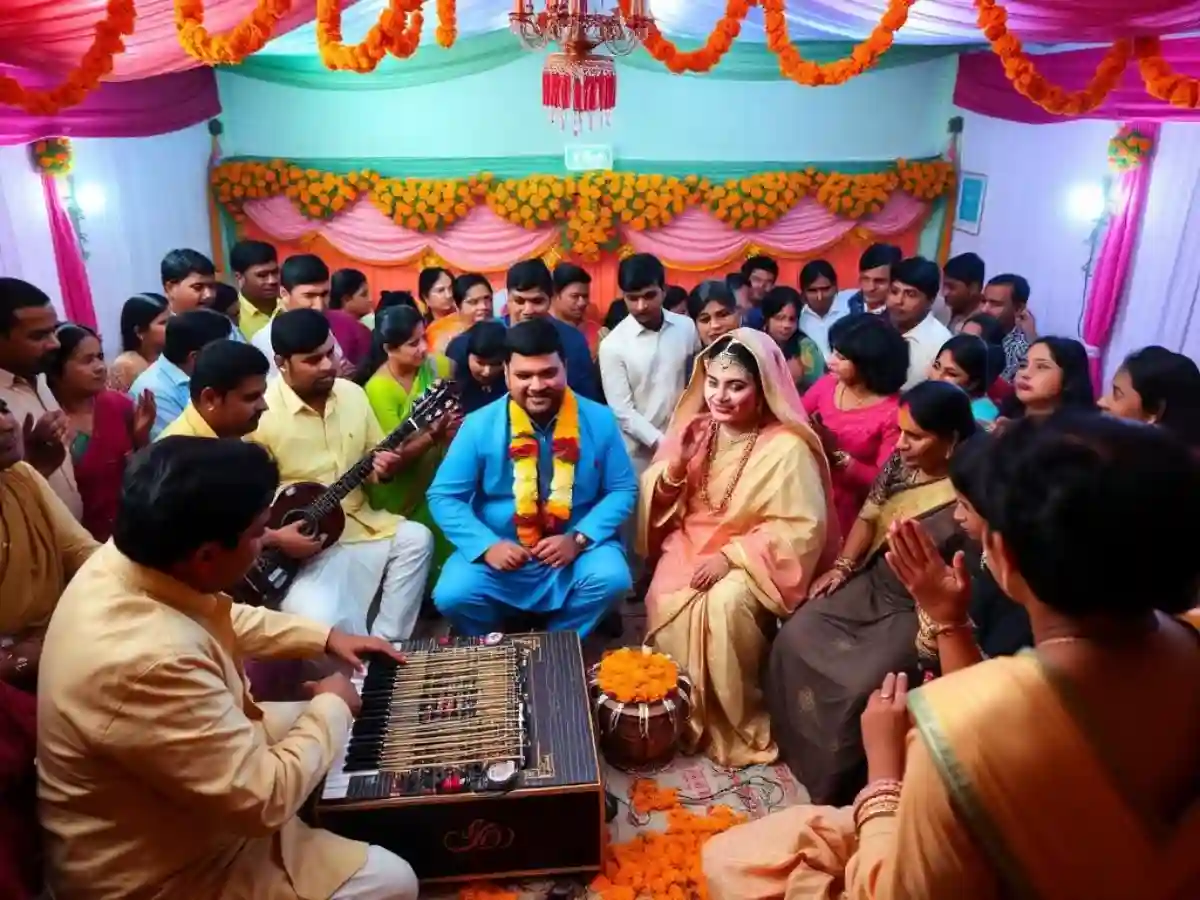
In Bengali wedding ceremonies, music is essential. Rabindra Sangeet and Baul songs set a joyful tone, enhancing the wedding venue atmosphere. These melodies reflect Bengal’s rich cultural heritage, helping unite Bengali families. Traditional music plays a crucial role in celebrating the love and unity of the bride and groom.
20. Food in Bengali Wedding Rituals
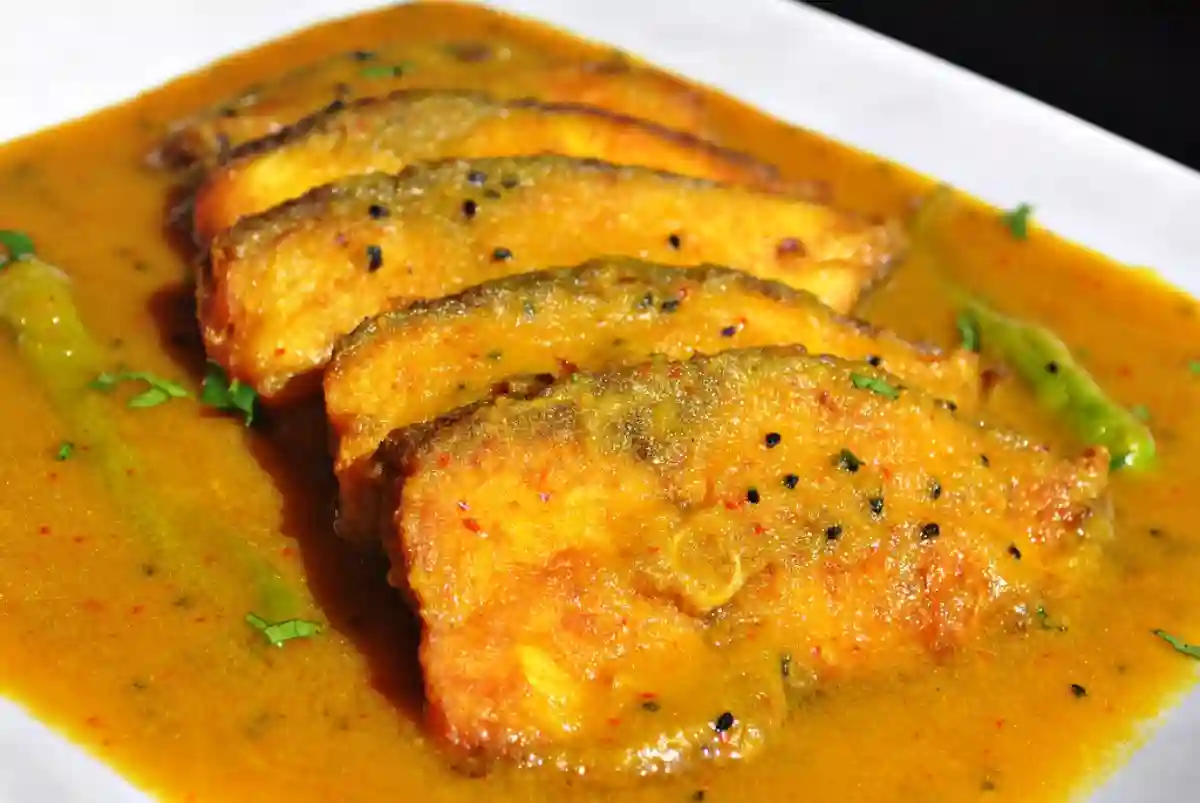
In Bengali wedding traditions, food plays a key role. Dishes like Macher Jhol and Shorshe Ilish showcase Bengali heritage. Rosogolla symbolizes sweetness in the newlywed couple’s life. The grand lunch feast reflects family, love, and happiness, while ghee rice is served for prosperity.
21. Decorations and Symbols in Bengali Marriage
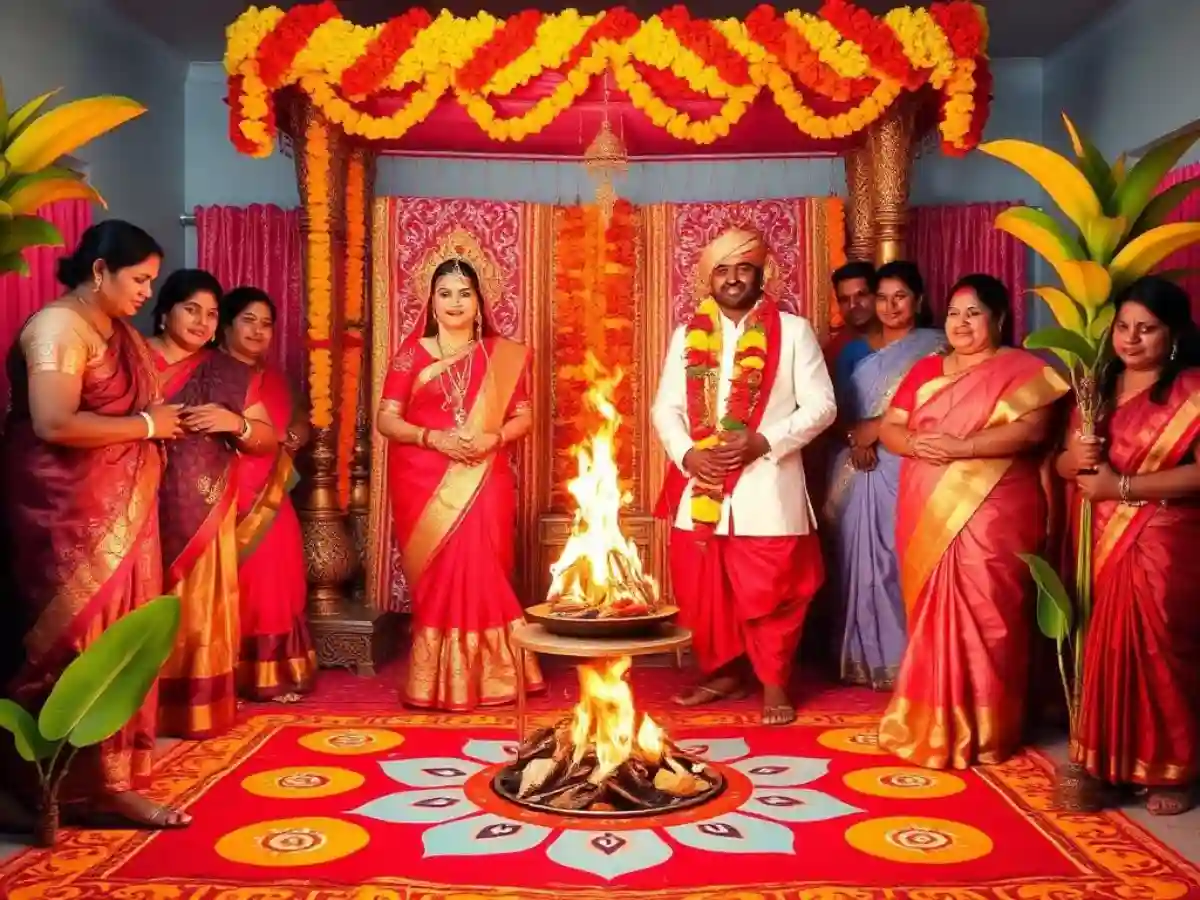
In Bengali wedding traditions, the sacred fire (Agni) symbolizes purity and the bond between the bride and groom. The bride wears a red saree, while gold jewellery signifies wealth and tradition. Family members play a key role, offering blessings to ensure a prosperous future for the new bride.
In these ceremonies, decorations like marigold flowers, rangoli, and banana leaves bring good luck and prosperity. These vibrant colors and symbols create a welcoming atmosphere for the bride and groom, reflecting Bengali tradition and ensuring a joyful start to their new life, full of blessings and harmony.

Bengali Wedding Traditions: A Recap
Bengali wedding traditions are full of meaning and joy. These traditions celebrate the union of both the bride and the groom and their families. Pre-wedding rituals like Aashirwad and Gaye Holud set the tone for the big day.
The wedding day is filled with important moments like the Yajna and Mala Badal, where family members, like the bride’s father and groom’s mother, take part.
After the wedding, rituals like Bidaai and Bou Bhaat mark the bride’s new journey. With flower garlands, gold jewelry, and favourite dishes, these Bengali wedding rituals create memories of love and respect that last a lifetime.


